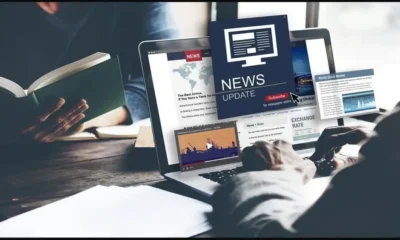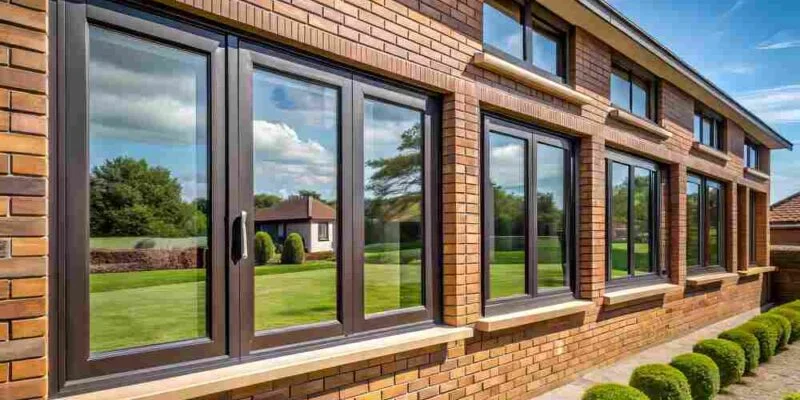The fintechzoom.com ftse 100, often referred to as the “Footsie,” represents the top 100 companies listed on the London Stock Exchange by market capitalization. It includes major players across industries such as finance, energy, pharmaceuticals, and consumer goods. As a barometer of the UK economy and investor sentiment, this index plays a crucial role for traders and financial analysts worldwide.
How FintechZoom Tracks the FTSE 100
FintechZoom offers real-time tracking and analysis of the FTSE 100, providing investors with up-to-date pricing, historical performance, and expert commentary. Whether you’re a seasoned trader or a beginner, FintechZoom’s clean interface and intuitive charts make navigating the index easy and insightful.
Why the FTSE 100 Matters Globally
Despite being UK-focused, the FTSE 100 includes multinational giants like HSBC, BP, and Unilever, meaning its performance often mirrors global economic trends. Investors use it not just to assess the UK economy but also as a diversified exposure to global markets.
Top Performing FTSE 100 Stocks on FintechZoom
FintechZoom regularly highlights top performers within the index. Whether it’s oil majors benefiting from commodity price hikes or pharma companies gaining traction post-pandemic, the platform helps investors spot winners. This data is crucial for anyone building a balanced portfolio or looking for high-growth potential stocks.
FTSE 100 vs. Other Global Indices
Compared to the S&P 500 or the DAX, the FTSE 100 leans more heavily toward traditional sectors like energy, finance, and mining. FintechZoom makes it easy to compare these indices side-by-side, helping investors diversify across regions and sectors intelligently.
Historical Trends and Market Insights
Using FintechZoom’s FTSE 100 charting tools, users can analyze how the index has performed during key global events—like Brexit, the COVID-19 pandemic, or major interest rate shifts. This historical data provides context and helps traders make forward-looking decisions.
Investment Strategies Based on FTSE 100 Trends
FintechZoom isn’t just for observation—it’s for action. Many investors use the platform to time entry and exit points using trend lines, support and resistance levels, or technical indicators like RSI and MACD. If you’re aiming for long-term dividends or short-term trades, these tools help you tailor your strategy.
Dividend Yields and Passive Income Potential
The FTSE 100 is popular among income investors due to its generous dividend payouts, particularly from sectors like utilities, energy, and telecoms. FintechZoom shows up-to-date dividend yields, ex-dividend dates, and payout ratios to support passive income strategies.
Risks Involved in FTSE 100 Investing
No investment is without risk, and the FTSE 100 is no exception. Factors like political instability, regulatory changes, or currency fluctuations (especially GBP/USD) can heavily influence performance. FintechZoom keeps users informed of these risks with timely articles and expert reviews.
Real-Time News and Updates
FintechZoom combines technical data with financial journalism. The site provides breaking news that impacts the FTSE 100—like economic reports, central bank announcements, or mergers and acquisitions—helping investors stay one step ahead.
Using FintechZoom for Portfolio Tracking
Beyond research, FintechZoom offers features that allow you to build and track a virtual portfolio. You can monitor how your FTSE 100 picks perform over time, get alerts on price movements, and even simulate different investing scenarios.
Beginner-Friendly Resources and Tools
FintechZoom’s FTSE 100 section isn’t just for pros. New investors benefit from simplified definitions, tutorials, and how-to guides. Whether it’s understanding what “market cap” means or how to evaluate a company’s P/E ratio, FintechZoom makes learning approachable.
Mobile Access and On-the-Go Monitoring
With its mobile-friendly site and app support, FintechZoom allows users to follow FTSE 100 performance anytime, anywhere. This is especially helpful for day traders or professionals who need to make quick decisions while away from their desks.
Expert Predictions and Analyst Ratings
FintechZoom often features expert predictions for the FTSE 100 and its components. By aggregating insights from economists and brokerage firms, the platform helps you understand broader market sentiment and analyst upgrades or downgrades.
Economic Indicators That Impact the FTSE 100
FTSE 100 stocks react strongly to economic indicators like GDP growth, inflation, interest rates, and employment data. FintechZoom contextualizes these metrics with visual charts and commentary to help users interpret their potential impact on stock performance.
Brexit, Politics, and the FTSE 100
Politics still plays a heavy role in FTSE 100 volatility. From Brexit fallout to trade deals and taxation policies, FintechZoom’s political analysis helps users understand the intersection between policy and market behavior.
Green Investing and ESG in the FTSE 100
Many FTSE 100 companies are now pushing ESG (Environmental, Social, Governance) initiatives. FintechZoom tracks this progress and allows investors to evaluate sustainability scores and corporate responsibility—vital for those focused on ethical investing.
Using FintechZoom for Technical Analysis
Advanced traders can use FintechZoom’s charting tools for in-depth technical analysis. From candlestick patterns to Fibonacci retracements, the site equips you with everything needed for tactical entry and exit decisions.
Long-Term vs. Short-Term FTSE 100 Outlook
Some investors look at the FTSE 100 as a long-term value play, while others treat it as a trading vehicle. FintechZoom caters to both audiences by offering data and content suited for either time horizon, empowering smarter decision-making.
Conclusion
FintechZoom has emerged as a powerful platform for monitoring and analyzing the FTSE 100. Whether you’re a casual investor curious about dividend-paying stocks or a day trader seeking real-time market insights, the site provides the tools, news, and guidance needed to navigate one of the world’s most influential stock indices. With smart visuals, expert opinions, and user-friendly features, FintechZoom makes investing in the FTSE 100 more accessible and strategic than ever.
FAQs
Is FintechZoom a stock trading platform?
No, FintechZoom is not a brokerage—it’s a financial news and analytics platform that provides insights for smarter investing.
Can I get live FTSE 100 updates on FintechZoom?
Yes, FintechZoom provides real-time updates, stock prices, and market movements for the FTSE 100.
Is the FTSE 100 good for long-term investing?
Yes, thanks to its high-dividend stocks and blue-chip companies, the FTSE 100 is often considered a reliable long-term investment.
Does FintechZoom cover economic news relevant to UK markets?
Absolutely. It includes detailed coverage of UK economic indicators, central bank decisions, and financial policies affecting the FTSE 100.
How accurate are FintechZoom’s stock predictions?
While predictions are based on expert analysis, markets can be unpredictable. Use FintechZoom’s insights as guidance, not guarantees.

 Blog6 months ago
Blog6 months ago
 Entertainment6 months ago
Entertainment6 months ago
 Technology3 months ago
Technology3 months ago
 News6 months ago
News6 months ago
 Blog6 months ago
Blog6 months ago
 Blog6 months ago
Blog6 months ago
 Technology6 months ago
Technology6 months ago
 Blog6 months ago
Blog6 months ago



